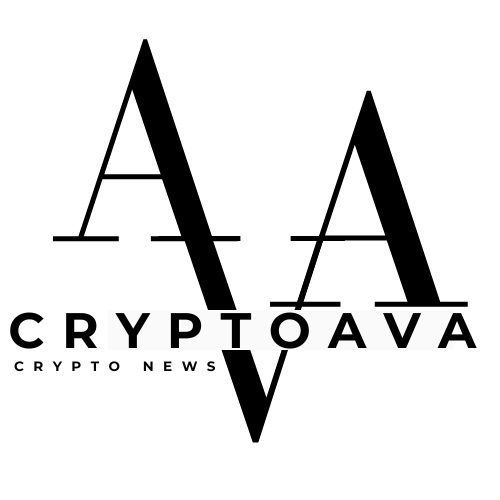MetaMask’s mUSD, the European Union’s digital euro initiative, and Hong Kong’s offshore yuan token AxCNH arrange a three-way contest for on-chain funds.
The prize just isn’t buying and selling quantity or speculative flows, it’s the share of real-world settlement that might attain $2 to $4 trillion yearly if 1 to 2 p.c of world cross-border funds transfer to tokenized rails.
In keeping with the IMF and trade analysis, reminiscent of McKinsey, the addressable base for cross-border exercise ranges within the a whole bunch of trillions of {dollars}, relying on scope, making even low single-digit penetration materials on a one-year to two-year horizon.
US greenback holds vital stablecoin benefit
Greenback rails have the speedy benefit as a result of distribution is already embedded in retail and developer workflows. mUSD ships inside MetaMask, is issued by way of Stripe’s Bridge, and makes use of M0 for on-chain mechanics. Reserves are structured for 1:1 backing and reporting.
The product launched in mid-September 2025 on Ethereum and Linea with wallet-level issuance and redemption that connects to current card and service provider pathways.
The mixture places issuance, spend, and on and off-ramps in the identical consumer interface and developer stack, a configuration that may compress settlement steps with out introducing new entrance ends.
The USA additionally now has a federal rulebook. The GENIUS Act, enacted in 2025, requires fiat-referenced tokens to carry liquid reserves with month-to-month disclosures and could also be issued by banks or licensed nonbanks. This creates a path for fee firms to distribute stablecoins inside current service provider networks.
Europe is constructing a distinct technique. The digital euro goals to cut back dependence on international card networks for retail funds, and finance ministers are transferring laws towards early 2026.
Per Reuters, policymakers are working by way of privateness, holding limits, and financial institution funding threat, and the European Central Financial institution has signaled a multi-year implementation plan after the enabling legislation. MiCA already formed the aggressive area earlier than any central financial institution token existed.
In keeping with skilled steerage summarizing MiCA’s fee utilization thresholds, non-euro stablecoins used for on a regular basis funds contained in the bloc face utilization ceilings of 1 million transactions or 200 million euros per day on a quarterly common, which nudges level of sale exercise towards euro-denominated devices and, ultimately, a digital euro scheme as soon as reside.
Asia focuses on coverage over market cap
China-aligned rails add a 3rd vector specializing in corridors, not world share. AxCNH, an offshore yuan stablecoin, has launched from Hong Kong with a licensing path beneath town’s stablecoin regime and messaging oriented to Belt and Street settlement.
Hong Kong’s stablecoin regime offers the compliance venue whereas convertibility and mainland coverage stay the swing components for scaling CNH tokens throughout commerce platforms, custodians, and exchanges.
Mainland warning over tokenization has additionally surfaced, with the securities regulator reportedly asking some brokers to pause RWA exercise in Hong Kong.
The bloc strategy already seems in sanctioned markets. Latest ruble stablecoin exercise demonstrates that policy-linked tokens can transfer worth in particular methods even when combination market capitalization stays far under the greenback provide.
Market capitalization, not transactional stream, is the scoreboard for the following section as a result of it captures sturdy float.
The present baseline, per DeFiLlama, exhibits greenback pegged stablecoins at about $291.7 billion with Tether at roughly 59 p.c share, euro pegged provide at about $480 million with EURC close to half the entire, and different pegs nonetheless small by comparability.
The share combine has shifted over the last two months as USDT’s dominance fell under 60 p.c whereas USDC regained floor and new entrants started to seed provide.
The important thing check for mUSD is whether or not embedded distribution accelerates float development sooner than exchange-led minting fashions, and whether or not Stripe’s service provider community shortens the space from pockets to receipt.
| Peg | Whole Market Cap | Dominant Token | Dominance |
|---|---|---|---|
| USD | $291.721b | USDT | 59.01% |
| EUR | $480.28m | EURC | 54.09% |
| SGD | $11.32m | XSGD | 100% |
| JPY | $7.73m | GYEN | 89.06% |
| CNY/CNH | $3.16m | CNHT | 99.83% |
| GBP | $0.589m | VGBP | 98.20% |
| RUB | $463.34m | A7A5 | 100% |
Race to $1 trillion market cap
A 12 to 24-month framing clarifies what it takes to succeed in the primary $1 trillion in market cap.
From a place to begin close to $292 billion, reaching $1 trillion in 24 months requires roughly 85 p.c annualized development, in 18 months about 127 p.c, and in 12 months above 240 p.c.
These charges don’t move judgment on feasibility however characterize the hurdle charges implied by the maths and set the bar for product distribution and compliance readiness.
Essentially the most credible catalysts line up in the US as a result of the GENIUS Act lowers coverage threat for fee firms, card companions, and banks that need to subject or distribute stablecoins, whereas yield on short-term Treasurys continues to make absolutely reserved tokens economical to carry for working capital and treasury operations.
If fee processors route settlement into stablecoins on the edge, stock will migrate from exchanges towards wallets with direct service provider hyperlinks.
Europe’s path facilities on home retail. If non-Euro tokens run into MiCA utilization ceilings contained in the bloc, retailers will emphasize Euro devices for day-to-day transactions, and the digital euro might turn out to be the default rail after reside launch.
That end result wouldn’t instantly increase the euro stablecoin market cap to the greenback scale as a result of cross-border and offshore flows would nonetheless favor the deepest liquidity swimming pools. Nonetheless, it could form the purpose of sale combine within the single market.
The implementation clock additionally issues
Laws in early 2026 would nonetheless depart two and a half to a few years for buildout, testing, and rulebook finalization, which locations mass availability nearer to 2027 or 2028.
AxCNH and different state-aligned tokens level to a hall technique moderately than a world seize technique. The query just isn’t whether or not CNH can change greenback liquidity, it’s whether or not licensed offshore issuance in Hong Kong plus commerce finance platforms can maintain settlement volumes in outlined routes.
Issuance scale will rely on convertibility mechanics, financial institution participation, and China’s stance towards personal tokenization experiments. Native licensing, anti-money laundering necessities, and supervision can remedy compliance on the venue degree, whereas forex controls and onshore coverage will govern depth and velocity.
The macro base case behind the $2 to $4 trillion funds determine stays intact.
In keeping with the IMF and funds trade evaluation, cross-border worth processed yearly is measured within the a whole bunch of trillions of {dollars}, and the combo is migrating to ISO 20022 and data-rich codecs that pair nicely with programmable settlement.
Stablecoins present immediate finality on the edge and predictable redemption into financial institution cash, which is why fee firms are transferring from card-linked crypto rewards towards direct stablecoin settlement in service provider flows.
If even one p.c of the conservative $200 trillion base settles on token rails, annual on-chain funds would attain $2 trillion, and at two p.c, $4 trillion, with float necessities and dealing capital buffers driving market capitalization above transactional averages.
Three operational questions will separate winners.
First is distribution, which implies how rapidly mUSD, USDC, and friends bind issuance to checkout, invoicing, and payroll with settlement that converts into financial institution depositories with out guide steps.
Second is rulebooks, which implies whether or not U.S. licensing produces bank-grade applications and whether or not MiCA’s each day caps push EU retail towards euro devices earlier than the digital euro arrives.
Third is corridors, which implies whether or not Hong Kong’s licensing, custody, and trade infrastructure can elevate CNH tokens into commerce settlement with out coverage whiplash.
Key information
- USDT’s share is under 60 p.c, and the rise of options provides the market headroom to reallocate float as new rails turn out to be accessible. mUSD’s pockets native issuance creates a direct line from consumer to service provider.
- The digital euro legislative plan places legislation in 2026 and multi-year build-out thereafter.
- AxCNH has gone reside with a compliance path centered on offshore yuan.
mUSD is reside inside a distribution channel, the digital euro laws is focused for early 2026, and AxCNH has launched in Hong Kong.
Provided that Tether’s USDT at present has the next market cap than all different stablecoins mixed, it’s straightforward to imagine the primary $1 trillion stablecoin will likely be pegged to the greenback.
Nonetheless, institutional adoption into conventional fee rails outdoors the US might realistically create a ‘Tortoise and the Hare’ race through which the encumbrance loses out.



